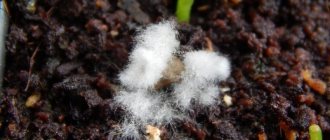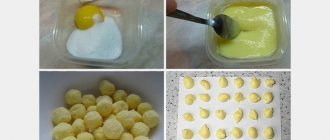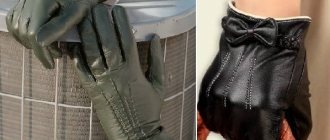At different times of the year, but especially in the autumn-winter period, mold can form on the walls of apartments and houses for various reasons. The appearance of mold in a residential area is a serious problem. It’s not easy to get rid of it, and living with such “neighbors” is dangerous to your health. Mold spores, when entering the human body, can cause many serious diseases, including allergies and bronchial asthma. Mold is also dangerous for indoor plants.
Dealing with mold is not easy. Of course, today you can buy a lot of chemicals in stores to eliminate mold, but most of them are no less dangerous for human, animal and plant health than the mold itself.
Therefore, it is better to use effective folk remedies in the war against mold, which are safer and time-tested.
So, you can get rid of mold in your apartment using regular chlorine-based bleach. The most ordinary “Whiteness” will do. The method is inexpensive, simple, but very effective. The substance perfectly eliminates fungi and their spores, but not all surfaces can be treated with it.
Bleach can effectively eliminate mold in the bathroom, toilet, and kitchen. The substance is suitable for processing glass, tiles and other materials with a non-porous structure. But they do not need to treat drywall, wood and other porous materials. You should also be aware that chlorine bleach can cause damage to painted surfaces.
Before treatment, the surface affected by mold must be cleaned and only then a bleach solution must be applied. It is not difficult to prepare the solution. To do this, take one part bleach to 10 parts water. Leave the applied solution until completely dry, only then can the surface be washed. The treatment should be carried out wearing a mask, gloves and good ventilation.
Baking soda
Baking soda creates an alkaline environment, and in such an environment fungi cannot reproduce. The advantage of this method of combating mold, in addition to low cost, is the safety of the substance for people and animals, as well as the lack of toxicity. And it is not even necessary to wash off the applied solution after treatment.
The solution is easy to prepare. Add a full teaspoon of baking soda to 1 glass of water and stir until dissolved. The prepared solution should be poured into a small bottle with a spray bottle, and then treated with it on the previously cleaned affected areas. You can simply wipe such areas with a sponge soaked in a soda solution.
Surface preparation
Before using vinegar to get rid of mold on walls “favored” by fungus, the surface must be prepared.
- Cleaning the surface from black mold deposits. To do this, you can use a stiff brush, scraper or vacuum cleaner. If mold appears, for example, on a plastic window or other smooth surface, it must be washed thoroughly with warm soapy water.
- Surface treatment. Here you can use a sponge or cloth soaked in liquid, or spray the solution with a spray bottle. The second method is especially convenient if mold has formed in corners or hard-to-reach places.
- Rinse the treated areas with warm water and ventilate the room. Both are usually done two hours after surface treatment.
Using the same principle as walls and windows, you can clean the seams between ceramic tiles in the bathroom. In this case, the surface is also first cleaned of mold and then thoroughly treated with vinegar.
Additional Information! If the fungus is very widespread, it is better to carry out the cleaning procedure 3-4 times with a short break.
Hydrogen peroxide
An ordinary pharmaceutical product is highly effective not only against bacteria, but also against fungi. The product is non-toxic, harmless to people and animals, and can be used to treat almost any surface.
However, it should be taken into account that peroxide has bleaching properties.
The affected areas are treated with hydrogen peroxide using a sprayer. After 10–15 minutes, the treated areas are cleaned with a brush, then the treatment is repeated.
A few more tips for fighting mold
Removing mold from walls
It is important not to hesitate and act as soon as signs of mold are detected, because in a maximum of a year it will reach concrete or brick.
Therefore, you need to know how to remove mold from the walls in your apartment with your own hands.
It is necessary to get rid of the damaged finish, lightly wet the wall to minimize the spread of fungal spores throughout the room, remove the plaster, and then thoroughly clean it alet. After completing the work, you need to sweep the room well, wait for the walls to dry and treat them with the selected antifungal agent.
You also need to figure out how to remove mold from the wall in your apartment if it is painted. In this case, the fungus spreads as much as possible over the surface, but practically does not penetrate inside. You can start treating the surface after the paint coating has been removed, moving from simple to stronger ones if necessary.
You should not use folk remedies when deciding how to remove mold from the walls or plasterboard ceilings in your apartment. It is better to use specialized means, since this material has a porous structure and, therefore, mold can develop deeper.
Mold spreads especially quickly on both wallpapers, so most often they need to be removed. This can only be avoided if signs of mold are detected at the initial stage of fungal development, but you cannot be sure in advance that mold is not developing. I'm under both.
In such a situation, vinegar, ammonia, lavender oil, a solution of manganese or hydrogen peroxide, as well as special chemical compounds can cope well with the fungus.
Important! All these products can change the color of the wallpaper, so the likelihood that they will be saved is extremely low.
Removing mold from the bathtub
Most often in the bathroom, mold develops at the sealant-treated joints between the plumbing and the wall, as well as the seams between the tiles. It is these places that are the most vulnerable and mold quickly appears on them - an indelible black coating. It is important to understand how to get rid of black mold in the bathroom.
It is necessary to remove the moldy sealant, treat the area with the selected product and reapply new sealant. As for the seams between the tiles, they should be cleaned using a metal scraper, and then use antiseptic grout.
When mold appears on the ceiling, the damaged area must be moistened with water and left for several hours. After this, you need to get rid of the whitewash and plaster and fill up any imperfections that have appeared. Then you should use a primer that contains antifungal agents, wait until it dries completely and apply a penetrating primer. After this, all that remains is to sand the surface and begin finishing work.
Help! In some cases, it is enough to apply a solution of bleach, baking soda, vinegar or tea tree oil to the ceiling.
Borax
Another pharmaceutical product that does not harm people, but works well against mold and at the same time has disinfectant properties.
To prepare, take a quarter cup of borax powder per 1 liter of hot water. After the substance has completely dissolved, pour it into a spray bottle and treat the mold-affected areas. After 10–15 minutes, clean with a brush and process again.
You can also make a paste from borax powder, apply it to moldy areas and leave until dry. Then clean the surface with a brush.
Are such methods effective?
Both soda and vinegar are seriously inferior to commercially available special products in terms of effectiveness. They can cope if the mold spores have not yet grown widely enough and have not penetrated deep into the finishing materials.
If mold appears again 1-3 weeks after treatment, it means that vinegar or soda were not effective enough, and it is recommended to use special products.
How to properly use the Fas sulfur bomb: instructions for use
Why does mold appear on windows (frames, slopes), and how to deal with it?
Related Posts
Tea tree oil
Natural tea tree essential oil perfectly eliminates bacteria and fungi of many types, including mold. The product does not cause harm to people and animals; on the contrary, it can improve health and even eliminate some diseases. But not everyone likes its smell. However, this problem can be solved by ordinary ventilation.
Prepare a solution from a glass of water and 1 teaspoon of tea tree oil. We carry out the treatment in the same way as when using hydrogen peroxide. There is no need to rinse off the substance, as the oil creates a protective coating against fungi.
How to prevent mold in your home
Mold thrives in damp places and can often be found around pipes, leaks or windows. The best way to prevent mold growth is to minimize humidity in your home.
- Inspect your home regularly . Look for signs of water damage or visible mold. Fix leaking pipes or roof leaks that could cause water to accumulate.
- Keep humidity levels under control . Consider using a dehumidifier in damp areas, such as the basement. Humidity levels between 30 and 50 percent are ideal for preventing mold ().
- Provide ventilation at home . Use fans in the kitchen and bathroom.
- Repair or replace leaky windows . Regular window repairs will help prevent mold from growing around the frame.
- Dry your home immediately after a flood . To prevent mold growth, it is best to dry out your home within 24 to 48 hours after a flood ().
- Add mold inhibitors to your paint . Many home improvement stores sell mold inhibitors that can be added to paints.
Lemon juice and citric acid
The effect of lemon juice, like a solution of citric acid, is in many ways similar to the effect of table vinegar. To prepare the solution, add either the juice of one lemon or a full teaspoon of citric acid to a glass of water. We carry out the treatment using a sprayer.
*****
By the way, mold often appears in flower pots, causing harm to plants. Getting rid of it won't be too difficult. For this purpose, you can use hydrogen peroxide, the essential oils listed above, soda solution, and lemon juice. All of these products, when used correctly, will not cause harm to plants; on the contrary, many of the substances can provide plants with many useful substances for growth, development and healing. You just need to spray the soil in the pot with the chosen product.
When not to use vinegar
Table vinegar is an almost universal remedy for combating mold. However, there are surfaces from which it is not recommended to remove mold with it. So, even a weak acid can disrupt the structure:
- marble;
- travertine;
- onyx;
- quartz;
- some varnish coatings.
As a result of vinegar treatment, traces remain on the surface of these materials. The appearance loses its attractiveness and may begin to deteriorate.
Also, in pursuit of quick results, you should not increase the concentration of the vinegar solution when removing mold in washing machines and dishwashers, so as not to damage the rubber connections and hoses. It is much safer to process the devices several times.
Processing protection measures
To protect yourself from the harmful effects of the products used, as well as the fungus itself, you should prepare for the procedure in advance:
- wear gloves, goggles, a respirator;
- Use a rag, sponge, sandpaper, brush, water container, or garbage bag while working.
When using any product described in the publication, be extremely careful not to spread mold spores throughout the house and prevent re-contamination of surfaces.
3 conclusion
Unfortunately, many do not realize the extent of the damage that mold can cause, believing that it only spoils the aesthetic appearance of the room. This is fundamentally wrong - mold is extremely dangerous for construction materials and, most importantly, for human health. That is why it is necessary to understand why mold appeared on the walls in the apartment, and how to get rid of this problem at home.
Sources
- https://J.Etagi.com/ps/kak-ubrat-gribok-so-sten-v-kvartire-vd/
- https://OPleseni.ru/udalenie/kak-izbavitsya-ot-pleseni-na-stenax.html
- https://www.ivd.ru/dizajn-i-dekor/uborka/kak-ubrat-plesen-so-steny-v-kvartire-raz-i-navsegda-dejstvennye-sposoby-36161
- https://StrojDvor.ru/ventilyaciya/chernaya-plesen/
- https://nedvigdom.ru/izbavitsya-ot-pleseni-na-stene/
- https://Mebel169.ru/articles/effektivnye-metody-borby-s-plesenyu/
- https://DomStrouSam.ru/plesen-v-kvartire-kak-izbavitsya-narodnymi-i-speczialnymi-sredstvami/
- https://yborka.online/uborka/plesen/kak-ubrat-v-kvartire-so-sten
- https://DomZnatok.ru/uborka/sovety/kak-ubrat-plesen/
- https://yborka.online/uborka/plesen/kak-ubrat-chernuyu-so-steny
- https://trudogolikam.ru/chistyj-dom/poleznye-sovety-kak-izbavitsya-ot-pleseni-v-kvartire.html
- https://stroyday.ru/stroitelstvo-doma/raznoe/kak-izbavitsya-ot-chyornoj-pleseni-sovety.html
- https://otlichnyjremont.ru/steny/poleznye-sovety-kak-mozhno-ubrat-vsyu-plesen-i-gribok-so-sten-v-kvartire.html











